
11 Mistakes to Avoid When Doing Local SEO for Bars
Implementing local SEO has incredible benefits in increasing the footfall to your bar. It’s inexpensive and helps you compete with other bars in the area. However, it’s possible to commit a few mistakes.
Listed below are the 11 local SEO mistakes that bars often commit:
1. Ignoring Negative Reviews
Online reviews play a significant role in making purchase decisions today. Nearly 19% of US online users consider internet reviews as important as personal recommendations. People leave reviews on major third-party sites like Yelp.
The below screenshot shows an example of a bar caring for its customers in the best way possible.
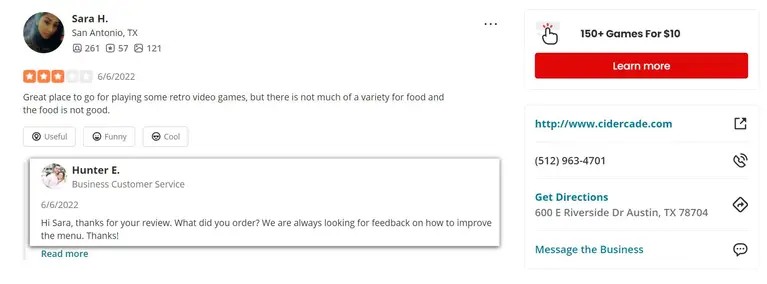
As a person who manages local SEO for a bar, it's vital not to ignore these reviews. Most of all, don't disregard the negative reviews. Not paying attention to dissatisfied customers paints a less-than-ideal image of your bar. It also hampers the local SEO, according to research.
The following tips shall help you respond to negative reviews:
- Address the customer by their name. Avoid generic salutations.
- Thank them for their review, even if it wasn’t kind.
- Apologize for their unpleasant experience.
- Steer clear of excuses. Show accountability for the unfortunate incident.
- Fix the issue or promise to do better next time.
Read: How to Respond to Positive & Negative Reviews in Google My Business
2. Not Placing Google Map on the Site
People will flock to your website when your local SEO initiatives start paying off. And when they do, your job is to make everything easier for them. Including Google Map on your home page or booking page is a key step.
The below screenshot shows how it’s embedded on the homepage of a bar website.
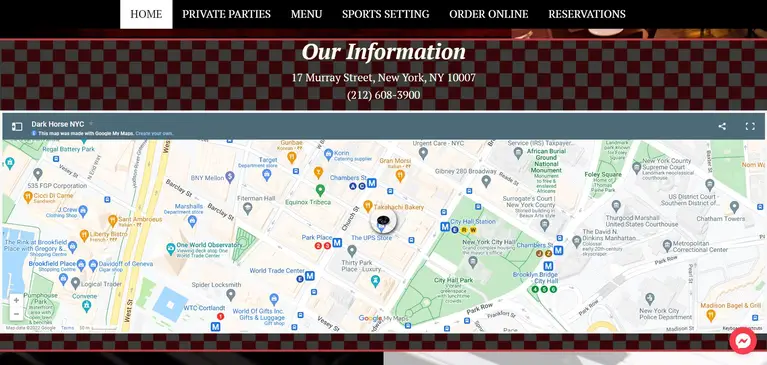
Here’s why it’s crucial:
- It helps customers find the bar’s location without leaving the site.
- It gives access to critical information like your phone number, reviews, and address.
- It lets them discover the nearby attractions and facilities.
- It encourages people to stay on your website.
- It enhances the user experience, which is ultimately good for local SEO.
Adding the Map is quite simple.
The three-step process includes:
- Creating an HTML page
- Using a marker
- Obtaining the API key
Google has made a brief guide that you can refer to.
3. Allowing User-Generated Content Break Consistency
There’s no doubt that Google loves user-generated content (UGC). Bars, in particular, enjoy more consistent UGC than most other businesses. People like to share how and where they spent their weekend, anniversary, holiday, etc.
Open any Google My Business (GMB) listing, and it will likely have plenty of photos/videos uploaded by customers. So, what’s the problem?
The below image shows one example that gives the audience real-time feedback about the bar.
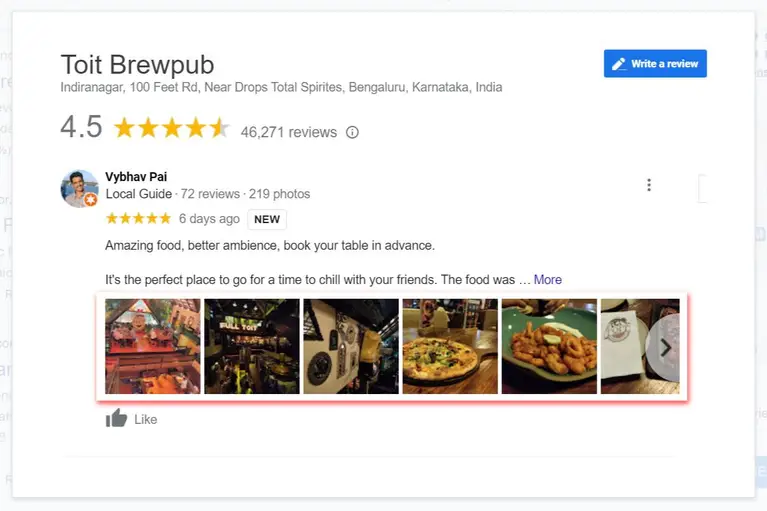
There are plenty.
- They can bury your GMB listing photos, including your bar’s exterior.
- Excessive reliance on UGC breaks the consistency of your brand.
- Poor quality images can make the ambiance look unappealing.
The solution?
- Don’t remove UGC but don’t depend on them entirely.
- Post newer listing photos so that they appear at the top.
- Maintain an ideal posting frequency, say, weekly.
This way, new visitors will find what they are searching for.
4. Unwilling to Create a Blog
This is a grave local SEO mistake. By not creating a blog, you are missing out on traffic.
Sure, not everyone will take the time to explore your blog. But, blogposts with important keywords organically sprinkled bring traffic. As shown below, most bars ignore having a blog page on their site.
This is one of the biggest opportunities bars can leverage to rank pages and pull maximum traffic.
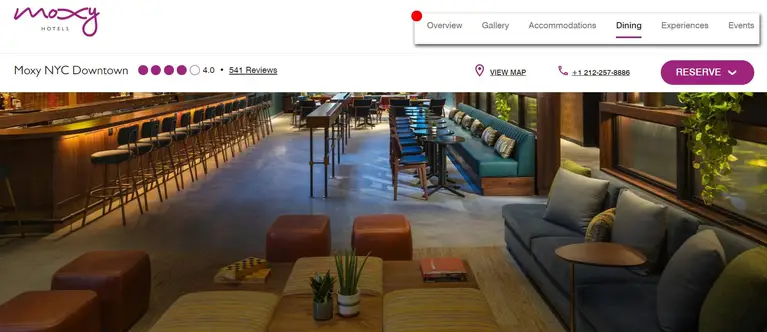
Here’s how you can benefit from blogging:
- Find location-based keywords. Use Moz Keyword Explorer, GetKeywords, or Semrush Keyword Magic Tool.
- Research new ideas for your blog. Tools like AnswerThePublic, HubSpot Blog Ideas Generator, and Portent Idea Generator are goldmines.
- Incorporate location-based keywords in your blog posts.
- Include relevant call-to-actions
Blogging necessitates time and effort. But the results are far-reaching. For one, it will bode well for your bar’s brand awareness. Consistent efforts will eventually improve your ranking on SERPs.
5. Never Providing Updated Information
People have basic questions when searching for local establishments, such as bars.
Those are concerned with:
- Finding directions to the bar
- Hours of operation
- Happy hour
Customers will get annoyed if the bar is closed when they visit. Thus, it's crucial to mention accurate operating hours to offer a better customer experience.
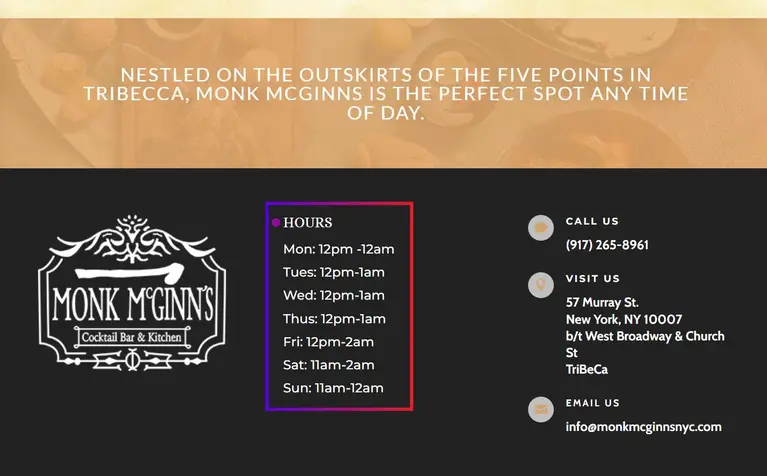
Failing to update this information on your site will turn visitors away. They will instead opt for a bar that does provide all the information. Google also favors results that give the best answer to users' queries.
Updating your happy hour could thus bring you on top of SERPs. This way, you can entice visitors looking for discounts and turn them into customers. And if you have indeed mentioned these details, ensure they are updated.
Let's say you've decided to change the hours of operation. In that case, it should also reflect on your website and GMB listing.
6. Failing to Optimize for Mobile
Nearly 50% of all internet searches occur on mobile devices.
Mobile optimization is imperative today. Imagine the user's frustration with zooming in on the text or waiting for the page to load.
The below screenshot shows a bar’s website that fails to show proper content on the mobile device. It disappoints the users.

Your website needs to be compatible, fast, responsive, and mobile-friendly.
These tips below will benefit you:
- Adopt a mobile-first approach. Hire a developer who can build a site solely for mobile users. If you already have a website, the developer can optimize it.
- Keep the branding consistent.
- Use intuitive drop-downs and CTAs.
Granted, your customers aren’t purchasing drinks from your site. It’s not an eCommerce store. However, a mobile-friendly website makes a good impression. Poor experience is off-putting for people who may decide against visiting your bar.
Not to mention, it’s a crucial ranking factor.
7. Not Listing on Major Directories
People use not just Google Maps to find a local bar. It could be Facebook, Bing, Apple Maps, etc. These, along with GMB, are called Tier 1 directories. Not listing your bar on these major directories is a big mistake. You are likely losing a ton of customers.
Take a look at the below screenshot showing the number of reviews left by the users. It’s similar to GMB reviews which indicate that many users surf these directories.

Of course, other local business directors like MapQuest, Spoke, and Best of the Web (BOTW) exist. Your bar could undoubtedly benefit from listing on these directories as well.
Here’s why:
- It improves discoverability even if people don't search for your business specifically.
- It drives traffic to your site.
- It strengthens your authority as a brand.
- It helps you get backlinks.
- It encourages people to leave reviews. As an owner (or marketer), you want more people to get talking about your business.
8. Slacking on Technical SEO
Besides content, there are many technical aspects of local SEO.
- Does your website have HTTPS security?
- Does it have a site map?
- Does your bar website load in under three seconds?
If not, there’s a problem. Not focusing on technical SEO will hurt your ranking. Google wants what users want – a fast-loading, mobile-friendly, and secure website. Otherwise, they are happy to switch to a competitor.
The tips below will help you navigate technical SEO:
- Obtain an SSL certificate; the below image shows why it is crucial

- Register with Bing Webmaster Tools and Google Search Console.
- Build a sitemap.
- Enable Google Accelerated Mobile Pages (AMP). They load 4X faster than conventional mobile-optimized pages.
- Use structured data markup. It helps Google understand the contents of your page. And, in turn, produce rich snippets on SERPs.
- Fix or eliminate broken links.
All of these are vital criteria. Hence, slacking on technical SEO is not something you want to do.
9. Neglecting Social Media Engagement
Besides online directories and your website, a third critical element impacts local SEO. And that is social media. Ignoring it is one of the biggest local SEO mistakes.
You’ve probably noticed that brand reputation is critical for local SEO. But how do you reinforce brand reputation?
The answer is – through social media.
Here's how you can build up the brand reputation through social media:
- Pick the most relevant social media channels. For a bar, Instagram and Facebook are more relevant than LinkedIn. You can check it using popular hashtags, as shown in the screenshot.
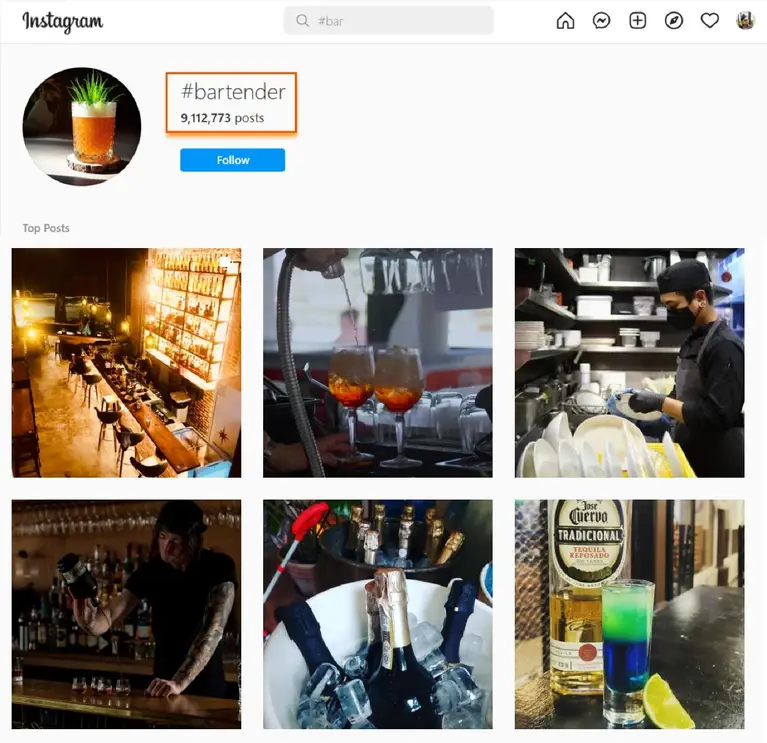
- Post content that connects with your audience.
- Use social listening tools like TweetDeck, Agorapulse, and Talkwalker to track brand mentions.
- Reply professionally to customer grievances.
- Try and respond to most of the comments.
- Share positive customer testimonials.
- Stay active. Hire a social media manager if necessary.
- Use tools like Loomly, Trello, and SproutSocial to plan and publish social media content.
Prioritizing social media engagement is also key to driving organic traffic.
10. Not Focusing on Conversions
The goal of local SEO isn’t just gaining traffic. If a significant portion of your traffic doesn’t convert, it’s a cause for worry. That means most of your hard work for increasing the traffic is going to waste.
Improving the conversation rate should also be an important local SEO goal.
Here’s how you can do it:
- Start by auditing your current local SEO strategy. See if you’re targeting the right audience.
- Get rid of generic keywords. Find out long-tail location-based keywords but never stuff them.
- Make sure you have a minimalistic, responsive, and appealing web design. Your traffic-boosting efforts will not pay off if people keep leaving your site due to poor user experience.
- Include the unique selling proposition (USP) in your web copy.
There are probably many bars in your region. What makes yours stand out? The answer is your USP.
11. Using Inconsistent NAPW Information
Let's revisit the online listings.
A big mistake that bars make is not updating their NAPW information, which is:
- Name
- Address
- Phone number
- Website
As mentioned before, online listings improve your discoverability. Imagine a prospective customer encountering the listing only to discover that the phone number no longer exists. You’ve just lost a customer.
Hence, removing these inconsistencies is necessary for local SEO. There are tools like SEMrush local listing management that help achieve NAPW consistency.
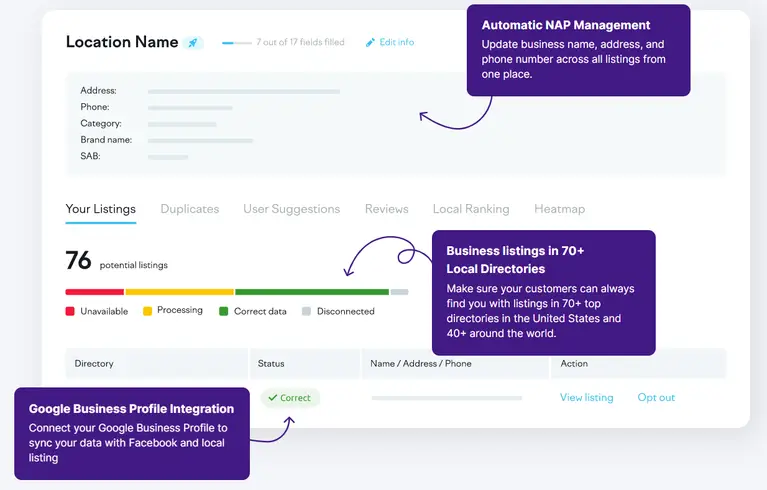
Pay attention to the following strategies:
- Update all incomplete listings. For instance, include it if an older listing doesn't have the address.
- Remove duplicate citations to avoid confusion.
- Please make sure the NAPW data is accurate when you change it.
Accuracy is critical. It’s because large aggregators publish the data to several listings. Get it right the first time.
Key Takeaways
These are the local SEO mistakes you must avoid:
- Not responding to unsavory reviews
- Not including Google Map on the site
- Depending too much on user-generated content
- Ignoring blogging completely or consistently
- Failing to update the site with basic information
- Not optimizing for mobile devices
- Avoiding listing on major directories
- Not focusing on technical SEO
- Disregarding social media engagement
- Not channeling efforts to improve conversions
- Using outdated NAPW data
ABOUT THE AUTHOR:
Brice Decker

Brice has been handling marketing projects for more than 12 years and he is providing consulting services on SEO, Social Media and PPC. He has a huge expertise in working at large corporations including Accenture Interactive & PwC Digital Services.
ABOUT THE AUTHOR:
Brice Decker

Brice has been handling marketing projects for more than 12 years and he is providing consulting services on SEO, Social Media and PPC. He has a huge expertise in working at large corporations including Accenture Interactive & PwC Digital Services.
Related Post
How to Rebrand Your Business Without Losing SEO?